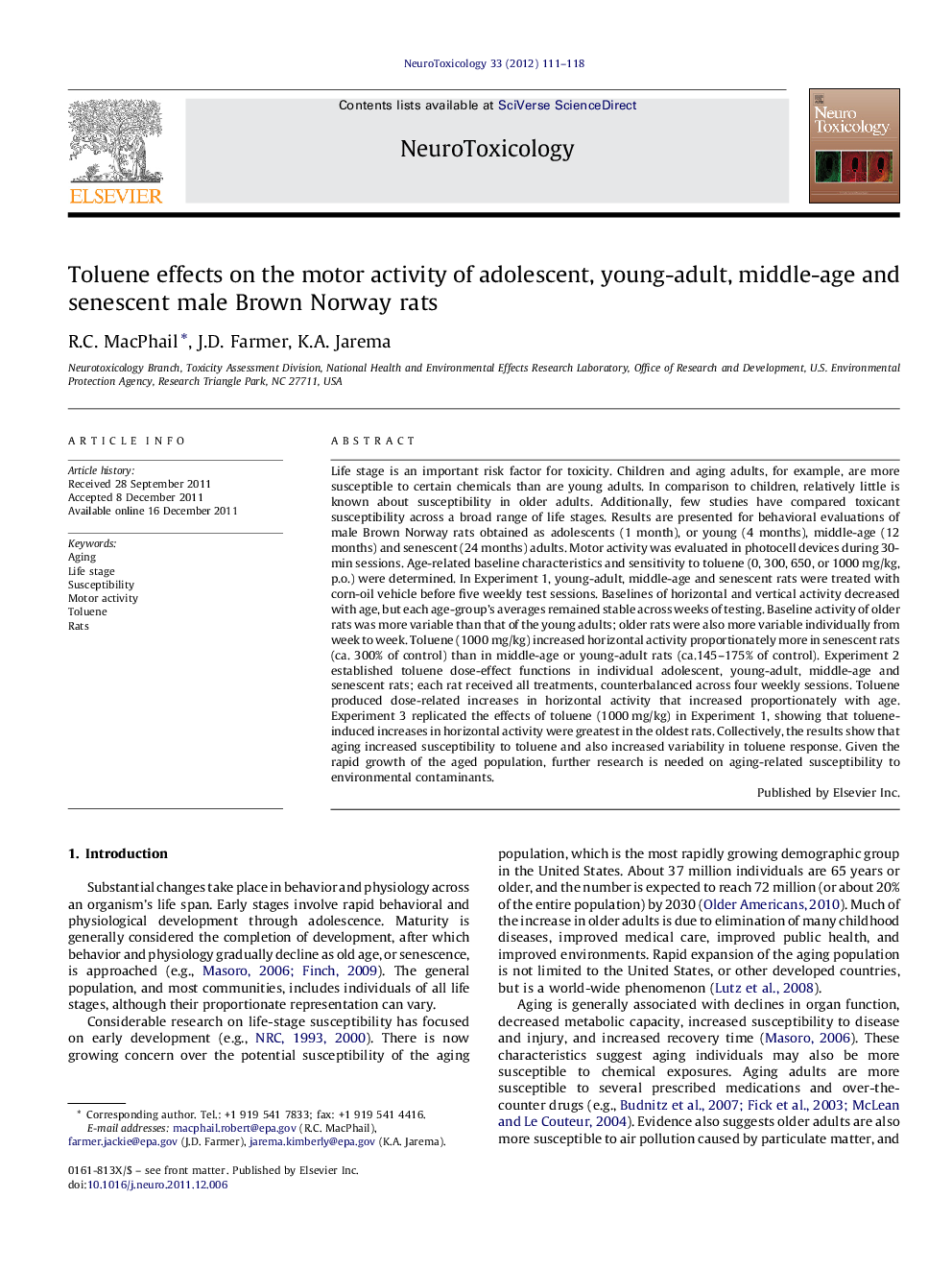| Article ID | Journal | Published Year | Pages | File Type |
|---|---|---|---|---|
| 2589791 | NeuroToxicology | 2012 | 8 Pages |
Life stage is an important risk factor for toxicity. Children and aging adults, for example, are more susceptible to certain chemicals than are young adults. In comparison to children, relatively little is known about susceptibility in older adults. Additionally, few studies have compared toxicant susceptibility across a broad range of life stages. Results are presented for behavioral evaluations of male Brown Norway rats obtained as adolescents (1 month), or young (4 months), middle-age (12 months) and senescent (24 months) adults. Motor activity was evaluated in photocell devices during 30-min sessions. Age-related baseline characteristics and sensitivity to toluene (0, 300, 650, or 1000 mg/kg, p.o.) were determined. In Experiment 1, young-adult, middle-age and senescent rats were treated with corn-oil vehicle before five weekly test sessions. Baselines of horizontal and vertical activity decreased with age, but each age-group's averages remained stable across weeks of testing. Baseline activity of older rats was more variable than that of the young adults; older rats were also more variable individually from week to week. Toluene (1000 mg/kg) increased horizontal activity proportionately more in senescent rats (ca. 300% of control) than in middle-age or young-adult rats (ca.145–175% of control). Experiment 2 established toluene dose-effect functions in individual adolescent, young-adult, middle-age and senescent rats; each rat received all treatments, counterbalanced across four weekly sessions. Toluene produced dose-related increases in horizontal activity that increased proportionately with age. Experiment 3 replicated the effects of toluene (1000 mg/kg) in Experiment 1, showing that toluene-induced increases in horizontal activity were greatest in the oldest rats. Collectively, the results show that aging increased susceptibility to toluene and also increased variability in toluene response. Given the rapid growth of the aged population, further research is needed on aging-related susceptibility to environmental contaminants.
► Motor activity was assessed in four ages of Brown Norway rat. ► Toluene's effect was also compared across the four ages. ► Baseline motor activity generally decreased with age. ► Toluene's effects generally increased with age. ► Variability in both baseline activity and toluene response also increased with age.
